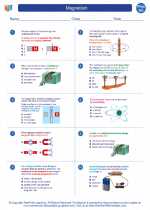Landforms: Definition and Types
Landforms are natural features that make up the Earth's surface. They are formed by the processes of erosion, weathering, and tectonic activity. There are various types of landforms, each with its own unique characteristics.
Types of Landforms
1. Mountains: These are large landforms that rise prominently above their surroundings. They are typically formed through tectonic activity, such as the collision of tectonic plates.
2. Plateaus: Plateaus are flat, elevated landforms that are characterized by steep cliffs or slopes on at least one side. They are often formed by the uplift of the Earth's crust.
3. Plains: Plains are extensive, relatively flat areas of land. They can be formed by the deposition of sediment or by the erosion of elevated landforms.
4. Valleys: Valleys are low-lying areas of land that are typically located between hills or mountains. They are often formed by the erosional activity of rivers or glaciers.
5. Canyons: Canyons are deep, narrow valleys with steep sides. They are usually formed by the erosional activity of rivers or tectonic forces.
6. Depressions: Depressions are sunken landforms, such as basins or sinkholes, that are formed by the dissolution of soluble rocks or the collapse of underground caves.
Study Guide
To study landforms, it is important to understand the processes that shape the Earth's surface, such as erosion, weathering, and tectonic activity. Additionally, it is essential to learn about the characteristics and formation of each type of landform. Here are some key points to include in your study guide:
- Define landforms and their significance in shaping the Earth's surface.
- Identify the different types of landforms and their distinguishing features.
- Explain the processes that contribute to the formation of each type of landform.
- Understand the role of tectonic activity, erosion, and weathering in shaping landforms.
- Explore real-world examples of notable landforms and their geological significance.
By mastering these concepts, you will develop a comprehensive understanding of landforms and the geological processes that have shaped the Earth's surface over millions of years.



